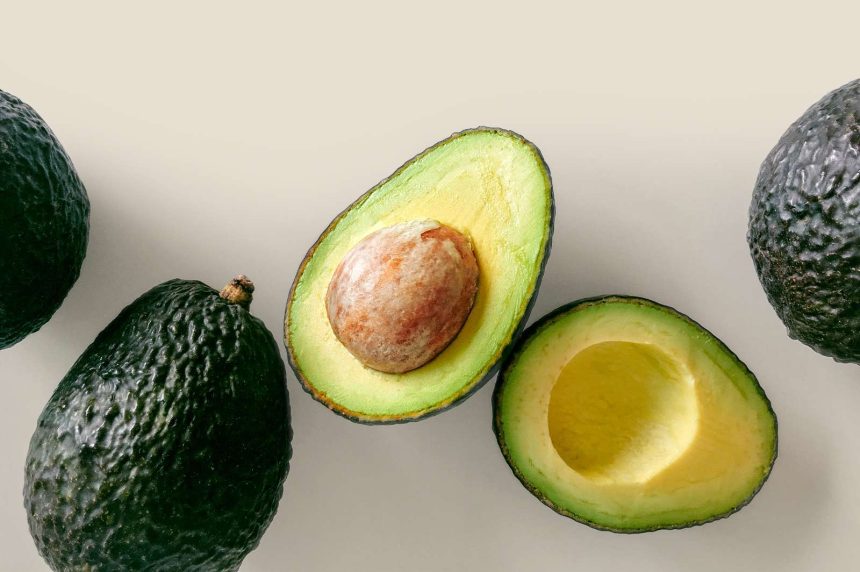If avocado toast is part of your breakfast rotation—or if you gladly pay extra for guac—there’s a good chance you’ve eaten your fair share of avocados. The fruit (yes, fruit) is incredibly popular. But there’s more to avocados than their delightfully creamy texture and mild flavor. They also have an impressive nutritional profile. Learn about the health benefits of avocado, according to a dietician, along with expert-approved ways to eat more avocados at home.
Avocados 101
Avocado is a fruit native to Mexico and Central America. It’s botanically considered a berry, though it’s often eaten as a vegetable. Also known as alligator pears, avocados grow on trees and are part of the laurel family, which includes cinnamon and bay leaves.
Nutrition and Benefits
Reduces Disease Risk
Avocado is rich in good fats known as monounsaturated fatty acids, says Candance Pumper, MS, RD, CSOWM, LD, a registered dietitian at The Ohio State University Wexner Medical Center. These fats—which are responsible for the creamy texture of avocado—can fight both inflammation and oxidative stress, two key factors involved in the development of chronic disease.
Helps Digestion
“Avocado is also a good source of dietary fiber,” shares Pumper. This fiber acts as a prebiotic or a substance that supports “digestive health by nourishing beneficial gut bacteria and promoting their growth,” says Pumper. This fiber also helps reduce inflammation and improve the diversity of gut bacteria, all of which can support regular bowel movements, says Pumper.
Benefits Brain Health
If you’d like to eat for brain health, reach for avocado. Its healthy fats can lend a hand by reducing inflammation (see above) and increasing blood flow to the brain, says Pumper. Avocado is also packed with vitamin E, an antioxidant that can help slow the progression of age-related neurological decline, she adds. Other nutrients in avocado—including potassium, magnesium, vitamin B6, and folate—are beneficial for the brain, as they play a role in “brain development and function, motor control, learning, memory, cognition, and mood,” says Pumper.
Supports the Heart
Another health benefit of avocado involves the heart. For starters, the fiber and fats in the fruit can help reduce high blood cholesterol, a major risk factor for heart disease. “Avocado also contains phytosterols or plant sterols,” adds Pumper. These substances are known to lower blood cholesterol and blood pressure, thereby protecting the heart.
What to Look For When Buying Avocados
Ripe avocados can go bad quickly, so shopping for the perfect one can be tricky. “If you’re looking for one to use the same day, gently press the skin,” suggests Vanessa Ali, M.A.T, chef and assistant professor at the College of Food Innovation & Technology at Johnson & Wales University. It should yield slightly to the touch without any mushiness. “The color can be a clue as well. Hass avocados, the most common variety, darken as they ripen, transitioning from bright green to nearly black,” shares Ali.
Alternatively, “if you need to store avocados for later in the week, choose firmer ones with a uniform green color and let them ripen at room temperature,” says Ali.
Pro tip: Remove the small stem at the top and check the flesh underneath. If it’s green, it’s good to go—but if it’s brown, it’s likely overripe, says Ali.
How to Use Avocado
Due its fairly neutral flavor, avocado is incredibly versatile. As such, there are many delicious ways to eat avocado.
Blended Drinks
When pureed into smoothies and milkshakes, avocado creates a silky, mousse-like consistency without the need for dairy, says Ali. Plus, “its mild taste allows other ingredients like berries, cocoa, coffee, or spices to shine while adding a luscious texture that feels indulgent,” says Ali. The subtle nuttiness of avocado can also round out other flavors in the drink, reducing the need for excessive sweeteners, according to Ali.
Sandwiches and Wraps
Avocado acts as a natural spread, making it a viable alternative to butter, mayonnaise, or dressings in sandwiches or wraps. For example, you can slather mashed avocado on bread or add slices for texture. It also pairs beautifully with smoked salmon, turkey, or grilled vegetables, enhancing both moisture and mouthfeel, notes Ali. “For a more structured bite, try cubed avocado mixed with citrus
zest and fresh herbs as a topping for a wrap,” suggests Ali.
Salads
The creamy texture of avocado will add a flavor contrast to salads, especially when paired with crunchier vegetables. Try it in Tomato, Corn, and Avocado Salad for a light summer side dish or Chicken Taco Salad if you’re craving something heartier. Alternatively, take a tip from Ali and make ensalada de aguacate y palmitos, a simple Colombian salad featuring avocado, hearts of palm, citrus vinaigrette, and cilantro or parsley. Serve it with grilled meat or on its own as a refreshing meal.
Condiments
Guacamole is a popular choice for avocado, but it’s not your only option. Try whipping up
Avocado Cream, which can be served with seafood, meat, or on top of chili. If you’re looking for a party-friendly dip for crudites or Buffalo wings, use avocado to make a creamy Avocado
Ranch Dip or Green Goddess Dip.
Complementary Flavors
Due to its balance of rich, buttery creaminess and mild sweetness that works well with both bright and bold flavors, avocado can be considered a “culinary chameleon,” says Ali. Acidic elements like citrus or vinegar help cut through its richness, while spicy ingredients like jalapenos, chili flakes,
or wasabi enhance its subtle sweetness, she notes. “Herbs like cilantro, basil, and mint bring freshness, and salty, umami-packed additions such as feta cheese, miso, or soy sauce create contrast,” adds Ali. Avocado is also the perfect partner for tropical fruits like mango and pineapple, as their juicy sweetness complements its creamy texture.







